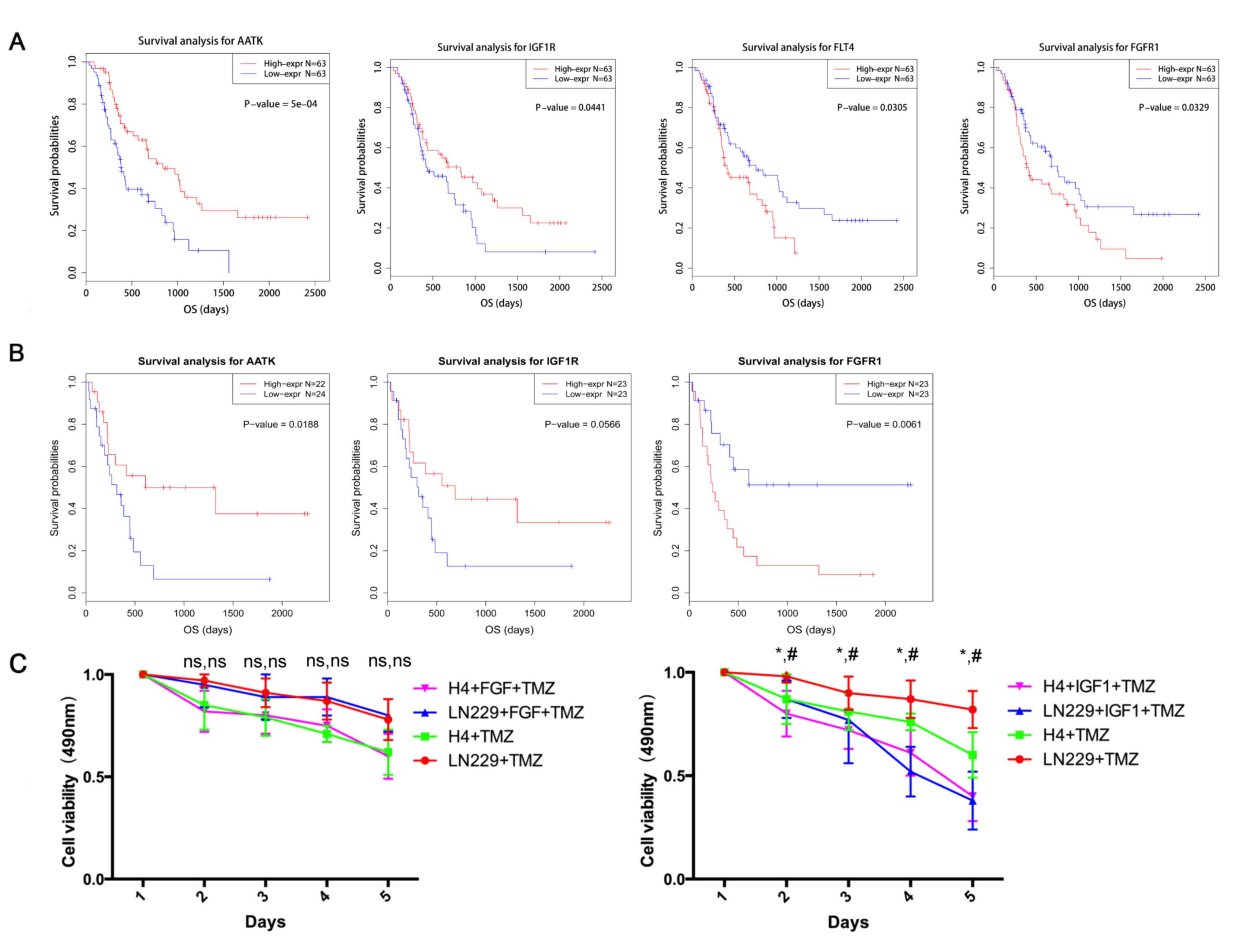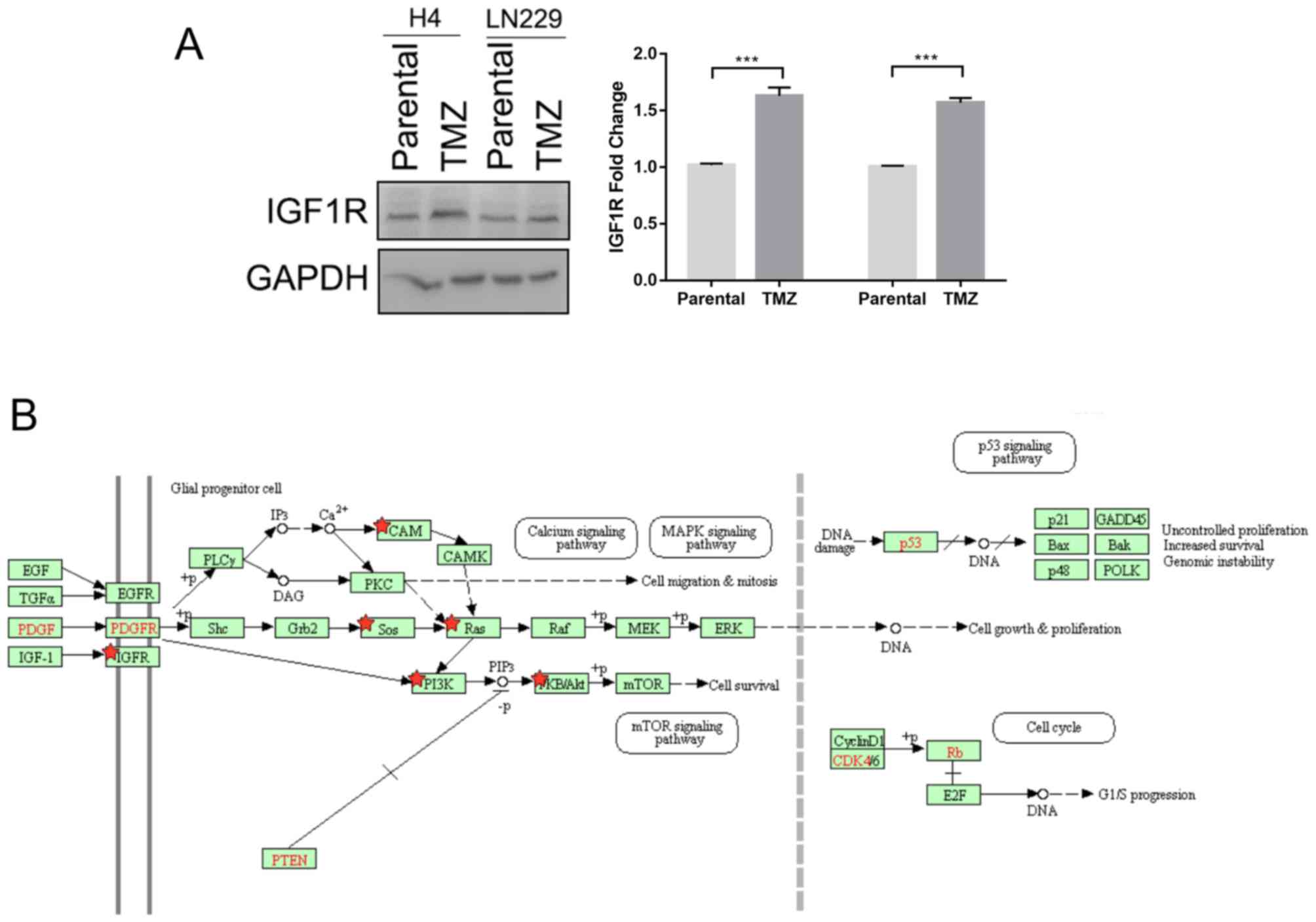|
1
|
Jiang T, Mao Y, Ma W, Mao Q, You Y, Yang
X, Jiang C, Kang C, Li X, Chen L, et al: CGCG clinical practice
guidelines for the management of adult diffuse gliomas. Cancer
Lett. 375:263–273. 2016. View Article : Google Scholar : PubMed/NCBI
|
|
2
|
Louis DN, Ohgaki H, Wiestler OD, Cavenee
WK, Burger PC, Jouvet A, Scheithauer BW and Kleihues P: The 2007
WHO classification of tumours of the central nervous system. Acta
Neuropathol. 114:97–109. 2007. View Article : Google Scholar : PubMed/NCBI
|
|
3
|
Stupp R, Brada M, van den Bent MJ, Tonn JC
and Pentheroudakis G; ESMO Guidelines Working Group, : High-grade
glioma: ESMO clinical practice guidelines for diagnosis, treatment
and follow-up. Ann Oncol. 25 (Suppl):iii93–iii101. 2014. View Article : Google Scholar : PubMed/NCBI
|
|
4
|
Cancer Genome Atlas Research Network, ;
Brat DJ, Verhaak RG, Aldape KD, Yung WK, Salama SR, Cooper LA,
Rheinbay E, Miller CR, Vitucci M, et al: Comprehensive, integrative
genomic analysis of diffuse lower-grade gliomas. New Engl J Med.
372:2481–2498. 2015. View Article : Google Scholar : PubMed/NCBI
|
|
5
|
Mock A, Geisenberger C, Orlik C, Warta R,
Schwager C, Jungk C, Dutruel C, Geiselhart L, Weichenhan D,
Zucknick M, et al: LOC283731 promoter hypermethylation
prognosticates survival after radiochemotherapy in IDH1 wild-type
glioblastoma patients. Int J Cancer. 139:424–432. 2016. View Article : Google Scholar : PubMed/NCBI
|
|
6
|
Turcan S, Rohle D, Goenka A, Walsh LA,
Fang F, Yilmaz E, Campos C, Fabius AW, Lu C, Ward PS, et al: IDH1
mutation is sufficient to establish the glioma hypermethylator
phenotype. Nature. 483:479–483. 2012. View Article : Google Scholar : PubMed/NCBI
|
|
7
|
Cairncross G, Wang M, Shaw E, Jenkins R,
Brachman D, Buckner J, Fink K, Souhami L, Laperriere N, Curran W
and Mehta M: Phase III trial of chemoradiotherapy for anaplastic
oligodendroglioma: Long-term results of RTOG 9402. J Clin Oncol.
31:337–343. 2013. View Article : Google Scholar : PubMed/NCBI
|
|
8
|
Intergroup Radiation Therapy Oncology
Group Trial 1942, ; Cairncross G, Berkey B, Shaw E, Jenkins R,
Scheithauer B, Brachman D, Buckner J, Fink K, Souhami L, et al:
Phase III trial of chemotherapy plus radiotherapy compared with
radiotherapy alone for pure and mixed anaplastic oligodendroglioma:
Intergroup radiation therapy oncology group trial 9402. J Clin
Oncol. 24:2707–2714. 2006. View Article : Google Scholar : PubMed/NCBI
|
|
9
|
Kaloshi G, Benouaich-Amiel A, Diakite F,
Taillibert S, Lejeune J, Laigle-Donadey F, Renard MA, Iraqi W,
Idbaih A, Paris S, et al: Temozolomide for low-grade gliomas:
predictive impact of 1p/19q loss on response and outcome.
Neurology. 68:1831–1836. 2007. View Article : Google Scholar : PubMed/NCBI
|
|
10
|
Bettegowda C, Agrawal N, Jiao Y, Sausen M,
Wood LD, Hruban RH, Rodriguez FJ, Cahill DP, McLendon R, Riggins G,
et al: Mutations in CIC and FUBP1 contribute to human
oligodendroglioma. Science. 333:1453–1455. 2011. View Article : Google Scholar : PubMed/NCBI
|
|
11
|
Yip S, Butterfield YS, Morozova O,
Chittaranjan S, Blough MD, An J, Birol I, Chesnelong C, Chiu R,
Chuah E, et al: Concurrent CIC mutations, IDH mutations, and 1p/19q
loss distinguish oligodendrogliomas from other cancers. J Pathol.
226:7–16. 2012. View Article : Google Scholar : PubMed/NCBI
|
|
12
|
Hegi ME, Diserens AC, Gorlia T, Hamou MF,
de Tribolet N, Weller M, Kros JM, Hainfellner JA, Mason W, Mariani
L, et al: MGMT gene silencing and benefit from temozolomide in
glioblastoma. N Engl J Med. 352:997–1003. 2005. View Article : Google Scholar : PubMed/NCBI
|
|
13
|
Schlessinger J: Cell signaling by receptor
tyrosine kinases. Cell. 103:211–225. 2000. View Article : Google Scholar : PubMed/NCBI
|
|
14
|
Regad T: Targeting RTK signaling pathways
in cancer. Cancers(Basel). 7:1758–1784. 2015.PubMed/NCBI
|
|
15
|
Sundaram MV: RTK/Ras/MAPK signaling.
WormBook. 1–19. 2006.PubMed/NCBI
|
|
16
|
Blume-Jensen P and Hunter T: Oncogenic
kinase signalling. Nature. 411:355–365. 2001. View Article : Google Scholar : PubMed/NCBI
|
|
17
|
Ou SH, Soo RA, Kubo A, Kawaguchi T and Ahn
MJ: Will the requirement by the US FDA to simultaneously Co-develop
companion diagnostics (CDx) delay the approval of receptor tyrosine
kinase inhibitors for RTK-rearranged (ROS1-, RET-, AXL-, PDGFR-α-,
NTRK1-) non-small cell lung cancer globally? Front Oncol. 4:582014.
View Article : Google Scholar : PubMed/NCBI
|
|
18
|
Hata AN, Niederst MJ, Archibald HL,
Gomez-Caraballo M, Siddiqui FM, Mulvey HE, Maruvka YE, Ji F, Bhang
HE, Krishnamurthy Radhakrishna V, et al: Tumor cells can follow
distinct evolutionary paths to become resistant to epidermal growth
factor receptor inhibition. Nat Med. 22:262–269. 2016. View Article : Google Scholar : PubMed/NCBI
|
|
19
|
Xie Q, Bradley R, Kang L, Koeman J,
Ascierto ML, Worschech A, De Giorgi V, Wang E, Kefene L, Su Y, et
al: Hepatocyte growth factor (HGF) autocrine activation predicts
sensitivity to MET inhibition in glioblastoma. Proc Natl Acad Sci
USA. 109:570–575. 2016. View Article : Google Scholar
|
|
20
|
Liu Y, Hu H, Wang K, Zhang C, Wang Y, Yao
K, Yang P, Han L, Kang C, Zhang W and Jiang T: Multidimensional
analysis of gene expression reveals TGFB1I1-induced EMT contributes
to malignant progression of astrocytomas. Oncotarget.
5:12593–12606. 2014.PubMed/NCBI
|
|
21
|
Cartland SP, Genner SW, Zahoor A and
Kavurma MM: Comparative evaluation of TRAIL, FGF-2 and
VEGF-A-induced angiogenesis in vitro and in vivo. Int J Mol Sci.
17(pii): E20252016. View Article : Google Scholar : PubMed/NCBI
|
|
22
|
Gong Y, Yao E, Shen R, Goel A, Arcila M,
Teruya-Feldstein J, Zakowski MF, Frankel S, Peifer M, Thomas RK, et
al: High expression levels of total IGF-1R and sensitivity of NSCLC
cells in vitro to an anti-IGF-1R antibody (R1507). PLoS One.
4:e72732009. View Article : Google Scholar : PubMed/NCBI
|
|
23
|
Zhou Y, Li S, Li J, Wang D and Li Q:
Effect of microRNA-135a on cell proliferation, migration, invasion,
apoptosis and tumor angiogenesis through the IGF-1/PI3K/Akt
signaling pathway in non-small cell lung cancer. Cell Physiol
Biochem. 42:1431–1446. 2017. View Article : Google Scholar : PubMed/NCBI
|
|
24
|
Liang Z, Diepstra A, Xu C, van Imhoff G,
Plattel W, Van Den Berg A and Visser L: Insulin-like growth factor
1 receptor is a prognostic factor in classical Hodgkin lymphoma.
PLoS One. 9:e874742014. View Article : Google Scholar : PubMed/NCBI
|
|
25
|
Mountzios G, Aivazi D, Kostopoulos I,
Kourea HP, Kouvatseas G, Timotheadou E, Zebekakis P, Efstratiou I,
Gogas H, Vamvouka C, et al: Differential expression of the
insulin-like growth factor receptor among early breast cancer
subtypes. PLoS One. 9:e914072014. View Article : Google Scholar : PubMed/NCBI
|
|
26
|
Almiron Bonnin DA, Ran C, Havrda MC, Liu
H, Hitoshi Y, Zhang Z, Cheng C, Ung M and Israel MA:
Insulin-mediated signaling facilitates resistance to PDGFR
inhibition in proneural hPDGFB-driven gliomas. Mol Cancer Ther.
16:705–716. 2017. View Article : Google Scholar : PubMed/NCBI
|
|
27
|
Wang H, Tang C, Na M, Ma W, Jiang Z, Gu Y,
Ma G, Ge H, Shen H and Lin Z: miR-422a inhibits glioma
proliferation and invasion by targeting IGF1 and IGF1R. Oncol Res.
25:187–194. 2017. View Article : Google Scholar : PubMed/NCBI
|
|
28
|
Arun S, Vanisree AJ and Ravisankar S:
Connexin 30 downregulates Insulin-like growth factor receptor-1,
abolishes Erk and potentiates effects of an IGF-R inhibitor in a
glioma cell line. Brain Res. 1643:80–90. 2016. View Article : Google Scholar : PubMed/NCBI
|
|
29
|
Ma Y, Tang N, Thompson RC, Mobley BC,
Clark SW, Sarkaria JN and Wang J: InsR/IGF1R pathway mediates
resistance to EGFR inhibitors in glioblastoma. Clin Cancer Res.
22:1767–1776. 2016. View Article : Google Scholar : PubMed/NCBI
|
|
30
|
Jiang J, Wang W, Fang D, Jin X, Ding L and
Sun X: MicroRNA-186 targets IGF-1R and exerts tumor-suppressing
functions in glioma. Mol Med Rep. 16:7821–7828. 2017. View Article : Google Scholar : PubMed/NCBI
|
















